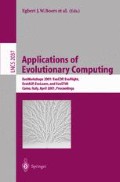Abstract
It is well known, that organism of animal, consisting of many billions cells, is formed by consequent divisions of the only cell - zygote. In so doing, embryo cells are permanently communicating by means of biochemical signals. As a result, proper genes were being activated at proper time in proper cells of the embryo.
Modern confocal microscopes being equipped by lasers and computers give possibility to trace-through the cell fate of early embryo for such a classical model object, as fruit fly Drosophila melanogaster. By this approach, it is possible to retrace the detailed dynamics of activity of genes-controllers of development with the resolution on the level of individual nuclei for each of 4-6 thousand cells, composing early fly embryo. The final result of this analysis will be the quantitative atlas of Drosophila genes action (expression): http://www.iephb.nw.ru/ spirov/atlas. To achieve this aim we need to receive statistically authentic summary picture of detailed pattern dynamics proceeding from a large number of scanned embryos. This presupposes the elaboration of the methods of preprocessing, elastic deformation, registration and interpolation of the confocal-microscopy images of embryos.
For this purpose we apply modern heuristic methods of optimization to the processing of our images. Namely classic GA approach is used for finding a suitable elastic deformation, for registering the images and for finding a Fourier interpolation of concentration (gene-expression) surfaces. All GA programs considered are the developments of “evolution strategies program” from EO-0.8.5 C++ library (Merelo).
Access this chapter
Tax calculation will be finalised at checkout
Purchases are for personal use only
Preview
Unable to display preview. Download preview PDF.
References
Lander, E.S.: The new genomics: Global view of biology. Science 274:536, 1996.
Sanchez, C., Lachaize, C., Janody, F., et al.: Grasping at molecular interactions and genetic networks in Drosophila melanogaster using FlyNets, an Internet database. Nucleic Acids Research 27:89–94, 1999.
Akam, M.: The molecular basis for metameric pattern in the Drosophila embryo. Development 101:1–22, 1987.
Spirov, A.V., Timakin, D.L., Reinitz, J. and Kosman, D. Experimental Determination Of Drosophila Embryonic Coordinates By Genetic Algorithms, the Simplex Method, And Their Hybrid. In S. Cagnoni et al., editors, Springer Verlag Lecture Notes in Computer Science, Number 1803, pages 97–106. 2000.
Reinitz, J., Kosman, D., Vanario-Alonso, C.E. Sharp, D.: Stripe forming architecture of the gap gene system. Developmental Genetics. 23:11–27, 1998.
Kosman, D. and Reinitz, J.: Rapid preparation of a panel of polyclonal antibodies to Drosophila segmentation proteins. Development, Genes, and Evolution 208:290–294, 1998.
Kosman, D., Reinitz, J. and Sharp D.H. Automated assay of gene expression at cellular resolution. In Altman, R., Dunker, K., Hunter, L. and Klein, T. editors, Proceedings of the 1998 Pacific Symposium on Biocomputing, Singapore: pages 6–17. World Scientific Press, 1997.
Merelo, J.J.: EO Evolutionary Computation Framework. http://www.geneura.ugr.es/jmerelo/eo
Spirov, A.V., Timakin, D.L., Reinitz, J. and Kosman, D. Using of Genetic Algorithms in Image Processing for Quantitative Atlas of Drosophila Genes Expression. http://www.mssm.edu/molbio/hoxpro/atlas/atlas.html
Myasnikova, E., Kosman, D., Reinitz, J. and Samsonova, M.: Spatio-temporal registration of the expression patterns of Drosophila segmentation genes, Proc.7-th Int.Conf. on Intelligent Systems for Molecular Biology, pages 195–201, AAAI Press, 1999.
Author information
Authors and Affiliations
Editor information
Editors and Affiliations
Rights and permissions
Copyright information
© 2001 Springer-Verlag Berlin Heidelberg
About this paper
Cite this paper
Spirov, A.V., Timakin, D.L., Reinitz, J., Kosman, D. (2001). Using of Evolutionary Computations in Image Processing for Quantitative Atlas of Drosophila Genes Expression. In: Boers, E.J.W. (eds) Applications of Evolutionary Computing. EvoWorkshops 2001. Lecture Notes in Computer Science, vol 2037. Springer, Berlin, Heidelberg. https://doi.org/10.1007/3-540-45365-2_39
Download citation
DOI: https://doi.org/10.1007/3-540-45365-2_39
Published:
Publisher Name: Springer, Berlin, Heidelberg
Print ISBN: 978-3-540-41920-4
Online ISBN: 978-3-540-45365-9
eBook Packages: Springer Book Archive

